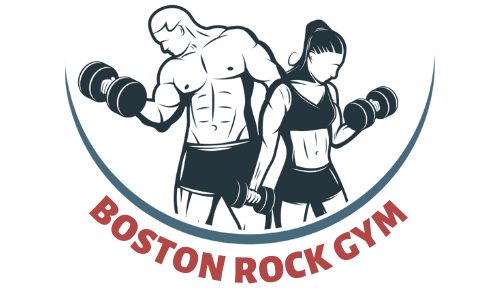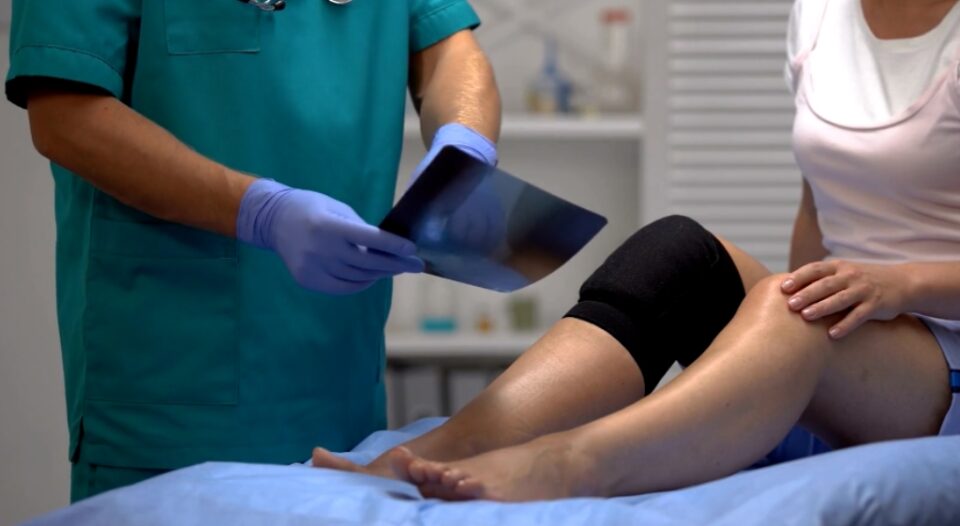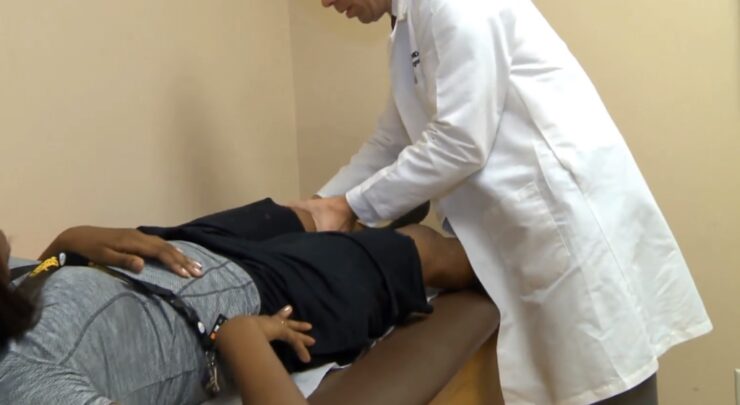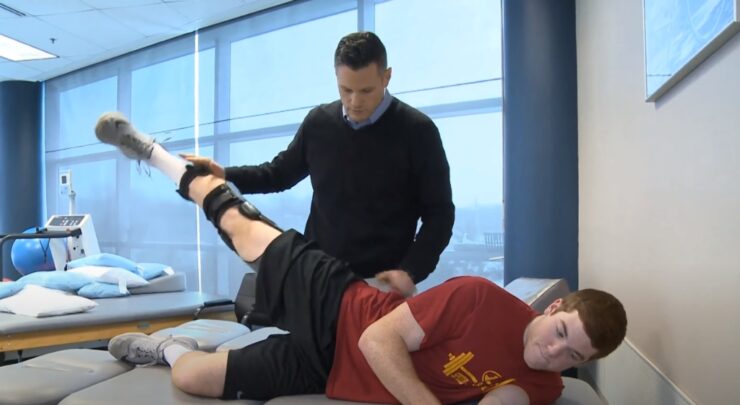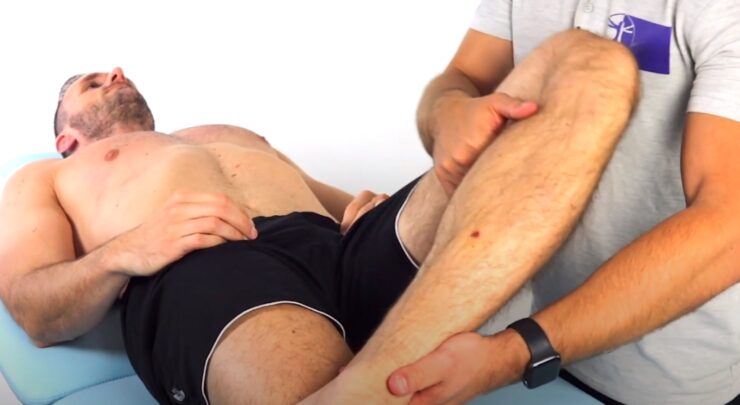Muscle injuries are a common setback for athletes and fitness enthusiasts alike. Whether it’s a minor strain or a more severe tear, these injuries can disrupt training routines and hinder progress.
In recent years, Platelet-Rich Plasma (PRP) therapy has emerged as a promising alternative for muscle injury treatment and recovery. In this article, we delve into the world of PRP therapy for muscle injuries, exploring how it works and its potential benefits.
Contents
Understanding PRP Therapy
Platelet-rich plasma (PRP) therapy, commonly referred to as PRP therapy, is a non-surgical medical procedure that taps into the body’s extraordinary natural healing capabilities. It represents a cutting-edge approach to healing, with the potential to revolutionize the treatment of various musculoskeletal injuries and conditions.
At its core, PRP therapy involves the extraction and concentration of platelets from the patient’s blood, capitalizing on the remarkable healing properties contained within these tiny cellular structures.
These platelets are a treasure trove of growth factors, cytokines, and bioactive proteins, all of which play a pivotal role in orchestrating the intricate dance of tissue repair. The concentrated platelets are then skillfully introduced directly into the injured muscle, serving as a catalyst that accelerates and amplifies the body’s innate healing mechanisms.
The Science Behind PRP
To truly grasp the marvel of PRP therapy, it is essential to delve into the science underpinning this innovative approach. When an injury occurs, whether it be a muscle strain, a ligament tear, or a tendon sprain, the body’s immediate response is to dispatch platelets to the affected area.
These platelets are not mere bystanders; rather, they act as cellular powerhouses, harboring an impressive array of growth factors. These growth factors serve as molecular signals that trigger and orchestrate the complex symphony of tissue repair.
However, in some cases, the concentration of platelets at the injury site may not be adequate to ensure a swift and robust recovery. This is where PRP therapy steps in to bridge the gap. PRP therapy addresses this challenge by employing specialized PRP tubes like SELPHYL®, which are a critical element in the process. These tubes are designed to create an exceptionally concentrated platelet solution.
Within these tubes lies an anticoagulant that prevents the platelets from forming clots, ensuring a uniform and rich solution teeming with growth factors. Subsequently, this concentrated PRP is gently introduced into the injured muscle, supercharging the body’s innate healing processes.
PRP for Muscle Injuries: How It Works
When PRP is strategically injected into a muscle injury site, it operates as a veritable catalyst for an accelerated and optimized healing journey. The growth factors enclosed within the PRP act as a trigger, initiating a cascade of events that stimulate the production of collagen and the formation of new blood vessels. Both of these processes are pivotal constituents in the healing process.
Collagen, often referred to as the body’s scaffolding, is the primary structural protein in connective tissues, including muscles. In the context of muscle injuries, collagen is instrumental in the formation of scar tissue, which gradually replaces the damaged muscle fibers. This process helps restore the structural integrity of the muscle, facilitating its return to full function.
Simultaneously, the emergence of fresh blood vessels, a process known as angiogenesis, ensures a consistent supply of nutrients, oxygen, and immune cells to the wounded area. This enhanced blood flow is crucial for promoting tissue repair, as it facilitates the removal of cellular debris and supports the growth of new, healthy tissue. The result is a comprehensive and efficient healing process that can significantly reduce recovery times and minimize the risk of complications.
One particularly noteworthy advantage of PRP therapy is its minimally invasive nature. Unlike surgical interventions, which often require significant downtime and carry inherent risks, PRP therapy is performed on an outpatient basis. This means that patients can often resume their regular activities shortly after the procedure, experiencing minimal disruption to their daily lives.
Discovering the potential of elite athletes’ training secrets can shed light on the methods they use to stay at the peak of performance, aligning with the topic of accelerated healing for muscle injuries discussed in the related article.
Benefits of PRP Therapy for Muscle Injuries
- Faster Recovery: Perhaps the most compelling benefit of PRP therapy is its capacity to expedite the recovery process. By delivering a concentrated dose of growth factors directly to the injured muscle, PRP therapy jumpstarts the body’s natural healing mechanisms. This can lead to significantly quicker recovery times when compared to conventional treatments.
- Reduced Pain and Inflammation: Muscle injuries are often accompanied by pain and inflammation, both of which can be debilitating. PRP therapy’s anti-inflammatory properties can alleviate pain and diminish inflammation at the injury site, providing welcome relief to individuals grappling with the discomfort of muscle injuries.
- Natural Healing: PRP therapy is fundamentally rooted in harnessing the body’s natural healing mechanisms. This approach minimizes reliance on synthetic drugs or invasive surgical procedures, making it an appealing option for those who prioritize natural and holistic healing.
- Lower Risk of Complications: Since PRP is derived from the patient’s blood, the risk of allergic reactions, infections, or adverse reactions is significantly reduced. This reduces the anxiety and uncertainty often associated with medical procedures.
Discovering effective strategies for muscle injury repair is essential for athletes and fitness enthusiasts. In this context, accelerated healing methods like PRP therapy are discussed in more detail in the related article.
Is PRP Therapy Right for You?
While this therapy holds substantial promise as a treatment for muscle injuries, it is crucial to recognize that its effectiveness can vary based on the type and severity of the injury. Not all muscle injuries are the same, and not all patients will benefit equally from it.
Therefore, consulting with a healthcare professional experienced in PRP therapy is paramount to determine whether it represents the optimal course of action for your particular condition.
A comprehensive evaluation by a knowledgeable healthcare provider will take into account factors such as the location and extent of the injury, the patient’s overall health, and their specific goals for recovery. This individualized approach ensures that PRP therapy is applied judiciously, maximizing its potential benefits while minimizing the risk of unnecessary or ineffective treatment.
As you explore ways to accelerate healing for muscle injuries with PRP therapy, it’s vital to consider the comprehensive guide to preventing back pain when using rowing machines, ensuring a safe and effective recovery, as discussed in the related article.
Conclusion
In the relentless pursuit of expedited recovery and heightened healing, PRP therapy, administered through the utilization of PRP tubes, has emerged as a revolutionary approach for addressing muscle injuries. By capitalizing on the body’s innate ability to repair itself, PRP therapy represents a natural and minimally invasive alternative to traditional treatments.
It offers a ray of hope for individuals grappling with the physical and emotional challenges posed by muscle injuries, providing a pathway to swifter healing and a return to a fulfilling, active life.
If you find yourself facing a muscle injury and yearning for a swifter path to recovery, it is undoubtedly worth exploring the transformative potential of this therapy. However, as with any medical procedure, always prioritize consultation with a healthcare provider who possesses expertise.
When it comes to accelerating muscle injury healing, it’s essential to also address mental well-being by conquering gym-related body image concerns, as discussed in the linked article.
This ensures that your treatment decisions are well-informed and aligned with your unique needs and aspirations for recovery. The future of healing lies in the fusion of cutting-edge science and the body’s innate wisdom, and PRP therapy exemplifies this promising frontier.
